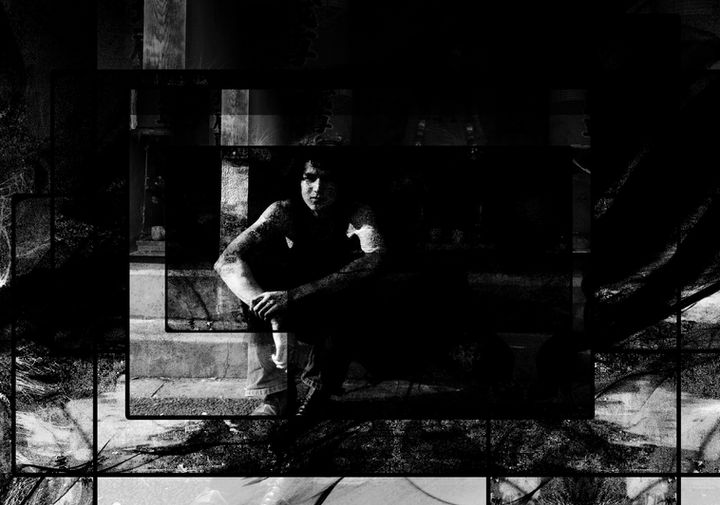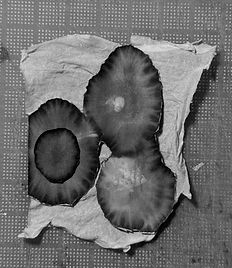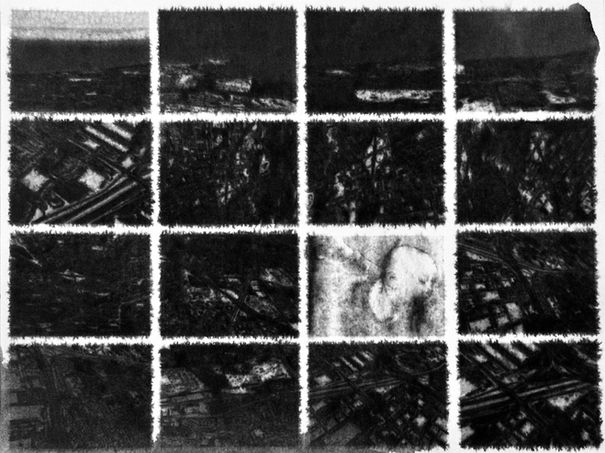
shuhei matsutoya
Artworks
human wither (2025)

How do textures tell the story of re-imagination, reconstructed history and revival? Through time, textures of surfaces and objects undergo a series of inevitable alterations, changing in shape and form. Whether it be a result of natural withering or human error, in a spirit of looking at reduction as an additive process, these scars represent an authentic, permanent form of beauty. The imperfection in distressed garments, the visual spontaneity in hands-on processes, contribute to a story of a constantly evolving, yet emotionally and temporally ephemeral family legacy.
FINE ART ELEMENT:
cyanotype on muslin
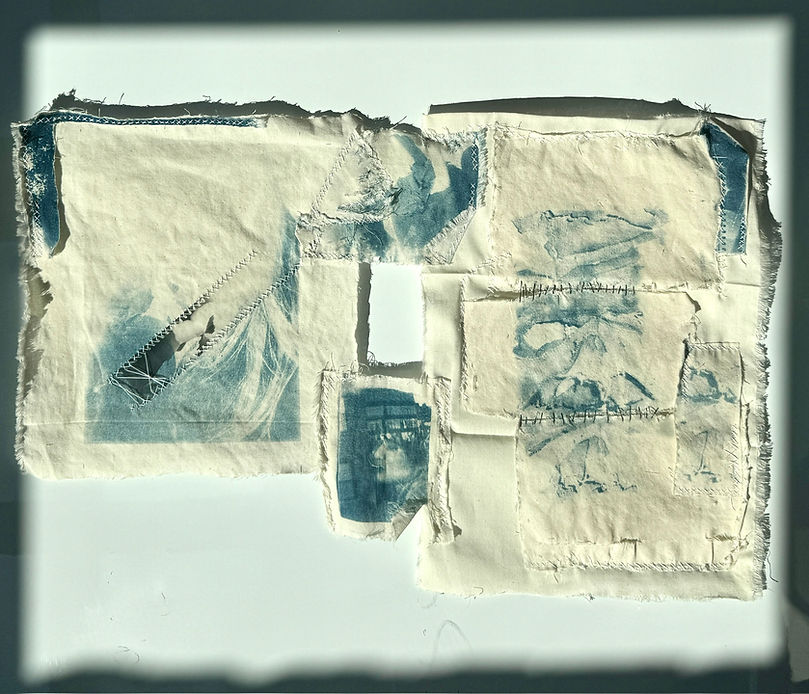
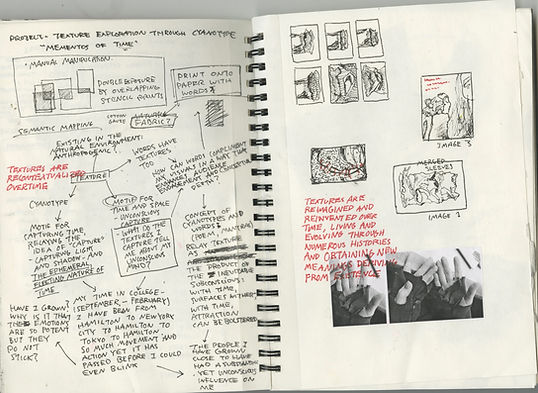



VIDEO ELEMENT:
The spirit of media archaeology lies in refusing to take the past at face value, and instead traveling into the time of its origins, comparing temporalities and using them to illuminate each other. In an age when digital technologies are more relevant than ever, I asked the questions: how could new technologies be utilized to illuminate earlier media types? Instead of shutting down this new technology of AI from art, how can we develop conversational relationships with it? Can it be used in order to better convey the importance of analog art forms?
The aesthetic and auditory decisions that I made were influenced in part by Lei Lei’s experimental films. His style in his film recycled is characterized by quick match cuts between hundreds of different found images, while the hand-drawn elements in his work hand-colored also bring about a sense of colorful artistry that feels unique to him and only him, in a Len Lye-esque method of stop-motion image manipulation. Although in Lei Lei’s films, these match cuts bring about a sense of shared nationalistic identity along with nostalgia and warmth, I intended for my version of this repetitive photographic capture to be unsettling and ominous by nature. These quick, flashing match cuts are also oscillations between the positive and negative versions of the same original image, which is referential to the printing process and seeks to highlight the beauty of the various traditional image creation methods both included in my project (cyanotype, photogram, 16mm film) and those that are not. The layering in this project was also done with my negatives through physical and digital overlays. These overlays were not only an aesthetic decision but also a decision made on the understanding that all of these images are physically the same size due to them originating from the same stencil negative, which is a characteristic that can only be repeated through analog photography. The quick match cuts in the video, in turn, are rationally proportional to the original sizes of the different prints. Additionally, I was also inspired by the music that Lei Lei utilizes in his films, especially in recycled. They are not traditional, but rather experimental with a fusion of electronic and analog elements. This unorthodox, distorted score not only works in tandem with the experimental images of recycled, but they are also representative soundtracks of the conceptual matter that is displayed in the work. I hoped to create a similar effect with the score of this project, which is composed by my friend and artist Shaun Kono-Peck. The ominous clicking sound that you hear throughout the score was made from a voice memo recording of the wires of a gondola moving on a ski resort slope. Since the sound already possessed a rhythmical nature, Shaun processed it to place them together in a way that sounded musical. The space created when there are no wire sounds is filled with the sole sound of the wind, all of which was digitized through different audio processing methods. Shaun then created a rhythmical motif based on this space and the absence of a distinct sound to curate a score representative of an atmosphere rather than a soundscape–all of which is created by an original sound that derives from a mechanical version of nature. Hence, the sounds you hear throughout the film were also created media-archaeologically, utilizing obsolescence to create new forms of beauty. This film can also be viewed as a commentary on media culture and its structures, and how its ideologies are constructed over time through the interplay between technology and culture (art). To illuminate this concept, I sought to explore the concepts raised by Gadassik and put into practice by Len Lye, particularly the idea of gestural repetition. In notable projects such as Free Radicals and Particles in Space, Len Lye’s usage of direct animation creates what Gadassik calls “kinetic traces on screen”, stamping these hand-drawn figures directly into his artwork as a sign of authenticity and evidence for an intimate connection between Lye’s spirit and his work. In the same article, Gadassik raised a critique of digital technologies, claiming the “photographic automatism” that comes with the practice of film takes artistry away from what is traditionally deemed as art. However, with this project, I sought to challenge this notion raised by Gadassik; I’ve worked with digital technology, film in particular–for years now, and I feel confident that the style I’ve developed is unique to my artistry and by proxy, my spirit. I was interested in challenging the concept of traces on screen being the only acceptable representation of one’s kinetic presence and evidence of the soul behind artwork by implementing digital manipulations instead. I took this concept further by using AI to experiment with the possibilities of developing new image forms whilst staying consistent with my conceptual intentions and artistic language by utilizing precise language in my inputs when interacting with the generative AI software. The wear and tear of a garment tells a story in itself. Worn clothing is an archive in itself–and in this project, highlighted is a crewneck with a family history tied to it. I hoped that the use of AI and its subsequent 2D-3D fusion would create a dimension of surrealism that brings obsolescence to life. Through this 3D-ifying AI visual, the textures are brought to life, and it even seems to come to touch you–in a haunting and ominous nature. In my project, AI is utilized as an animating tool that helps oscillate the viewer between the boundaries of the various visual worlds, including but not limited to: 2D and 3D, obsolete and useful, and past and future. AI is utilized in this project to imitate the basics of animation, bridging the temporal gap between the start and the end frames throughout the film.
Miscellaneous
